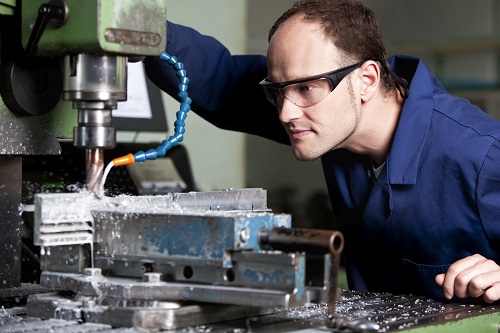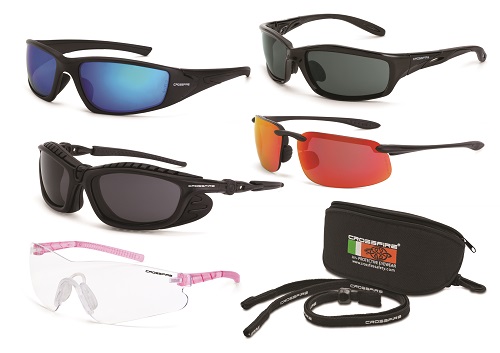It’s a good idea to protect both. OSHA provides clear standards on the use of eye and other personal protective equipment, yet workers often choose to not to follow these rules. Certainly, there are places where protection must always be worn, so it’s best to offer workers comfortable and fashionable choices.
Jim Krebs, Technical Marketing Engineer at AutomationDirect, penned an article titled Recommendations for the Use of Safety Eyewear, which ran in the January 2018 issue of ISHN magazine. He explained OSHA requirements, including who is responsible for safety. He also added some examples where eye protection is required, and reasons why it is not worn when it should be.
Clear and Scratch Free Requirements
Check out the American National Standard for Occupational and Educational Eye and Face Protection (ANSI Z87.1-2010) for a definition of what personal eye and face protection devices must be worn “in specific situations to protect workers from impact, non-ionizing radiation such as radio waves, and liquid splash exposure.”

“The Occupational Safety and Health Administration standards clearly define mandatory compliance and requirements for employers to follow with respect to eye and face protection. Following these requirements ensures protection against chemical, environmental, and radiological hazards or mechanical irritants.”
Krebs says it’s the plant’s responsibility to tell workers the when, what and how with respect to wearing proper personal protective equipment (PPE), in this case safety spectacles or safety glasses. The employer must provide this PPE at no cost to their employees. Here’s some examples of comfortable, fashionable and affordable safety spectacle options online at AutomationDirect.
When in Doubt, Wear Them
Safety spectacles don’t just protect from hazards related to the work you are personally performing, as multiple hazards can be present throughout a facility. These hazards include flying metal and wood chips, particles, fragments, dirt and sand. If you are drilling, sawing, grinding, sanding, fastening, riveting or a similar operation, you should be wearing safety glasses.
“Safety eyewear protects one of the most sensitive areas of the human body, the eyes. For this reason alone, it should be worn in any and all instances where hazards may be present. The area where these hazards exist must be clearly posted, with warnings to wear safety glasses.”
If you’re an employee, keep your eyes protected, even if your company doesn’t enforce rules requiring you to wear safety spectacles. Similarly, don’t be the facility with cheap, dirty, scratched or uncomfortable safety glasses—as this substandard equipment can give workers an excuse for not wearing the proper PPE. Many workers who have looked at the rack of safety glasses in their facility have some good arguments for not wearing them. But remember, OSHA also has requirements related to fit, comfort and durability that must be met.
“For these and other reason, proper care of PPE is important, as is the selection of quality eyewear. Safety glasses and other PPE must be in good condition, with inadequate equipment replaced, and care must be taken when purchasing all PPE.”
Perhaps it’s time for the employer to review the communal inventory of PPE, and may be to provide a new and improved selection.
Oh, Nice Glasses
There have been improvements in the fit, function and fashion of safety glasses over the last several years. The latest modern and stylish designs for protective safety eyewear are comfortable and lightweight. There are many frame and lens options available that meet the OSHA and the American National Standards Institute (ANSI) requirements for the industrial workspace.

“For example, AutomationDirect has 90 different styles or types of safety glasses available. Choices include full-frame, half-frame and frameless models—each with tinted or clear lenses. There are also different frame sizes to accommodate different face widths, and several over-the-glass styles for use with prescription glasses. Foam lined frames are also available to provide a closer fit to the face, providing improved protection from fine particles.”
Modern protective safety eyewear lenses are made of shatterproof polycarbonate, making them lightweight for comfort, and scratch-protective coatings provide a clear view. The non-industrial looking frame and lens designs are available with clear, tinted and polarized lenses, and some include anti-fog coatings. For bright light conditions, HD brown, smoke and mirror tinted lenses are available. Gray lenses are good for general purpose indoor or outdoor use. To enhance a worker’s vision or reduce glare indoors, clear, blue, yellow and orange lenses are available. Consider all the styles and options available when buying safety glasses.
If safety glasses are required in a certain area, you should wear them, and you should also wear them anytime protection may be needed, even if not required. There are many different styles available that do more than just protect the eye. For more information, check out our overview of protective safety eyewear. AutomationDirect has what is needed to provide the required protection, comfortably and with style, and your glasses will last for years if treated with care.
For more information about safety, click here.

